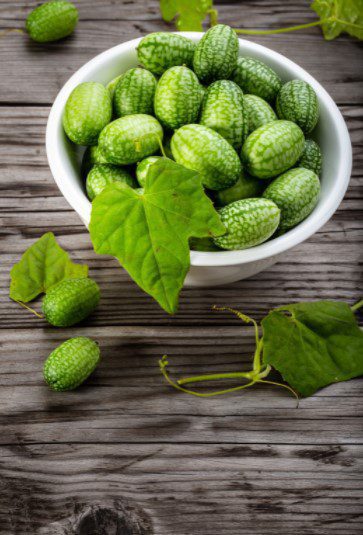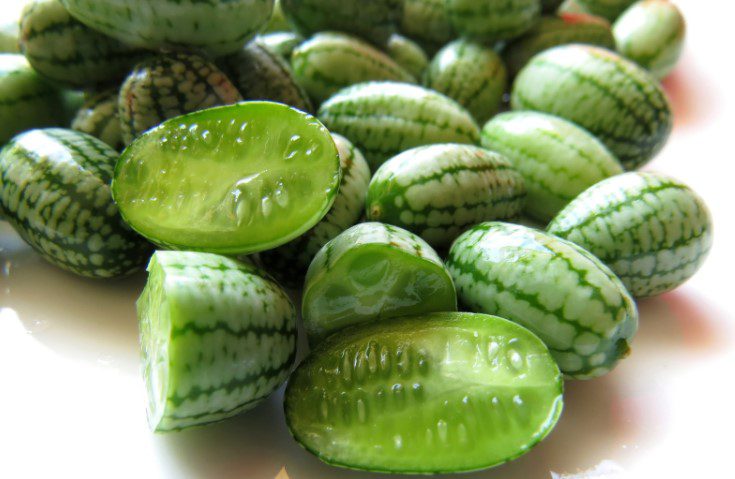Cucamelons
If you’re searching to try something new in your vegetable garden this season, perhaps the tiny but mighty cucamelon would be a good fit.
Cucamelons ( Melothria scabra) is also called Mexican sour gherkins or mouse melons. They’re closely related to cucumbers and other cucurbits.
They’ve been grown as a food crop in their native Mexico and Central America for many generations, but here in the U.S., we gardeners are a little late to the party.
Cucamelon Plants are slender vines that climb up to six feet in height. They’re prolific and multi-branching, though they’re slow to take off in the spring.
A warm-season crop, cucamelons shouldn’t be planted out into the garden until after the danger of frost has passed.
These cute, bite-sized morsels are about the size of a grape. They appear like a watermelon but taste just like cucumber with a hint of lime and are the in-thing to add to cocktails and gin and tonic.
How To Grow Cucamelons
You can grow the vines by planting a few tiny seeds straight into the garden, or you may start the seeds indoors, under grow lights, a few weeks before planting the young vines outdoors.
Several weeks later, the vines begin to produce flowers and fruits. You’ll be surprised at how many little cucamelon fruits are produced on each vine.
For most families, one or two vines are more than enough. Each little fruit is only an inch long, but it looks like miniature watermelons and packs a unique flavor.
They taste much like citrusy cucumber, and cucamelons can be eaten fresh, pickled, or used in any number of recipes you may find online.
At my house, I slice them and use them in a carrot salad with a sesame dressing, among other recipes.

Like other members of the cucumber family, cucamelon vines produce separate male and female flowers on each plant, which means that not every flower will produce fruit. Still, there are plenty of fruits grown on each plant.
It’s fun to watch some of our tiny, iridescent native bees pollinate the blooms. The flowers are incredibly tiny, a perfect fit for smaller bee species.
If you grow cucamelons this season, be sure to provide them with a sturdy structure to climb. A fence or trellis intertwined in chicken wire does wonder.
Allowing the vines to sprawl on the ground consume up a lot of valuable garden area.
Plus, having the vines trellised means you won’t have to bend over to harvest the small fruits.
Harvesting
If you skip one or two cucamelons at harvest time, they’ll fall to the ground, and the seeds will sprout the following spring, essentially making them a self-sowing vegetable crop.
But be careful that you don’t leave too many fruits behind, or they will easily reseed a bit too prolifically.
These grape-sized fruits are crunchy and refreshing and well worth a try in your garden.
Several seed companies carry Cucamelon seeds.


























